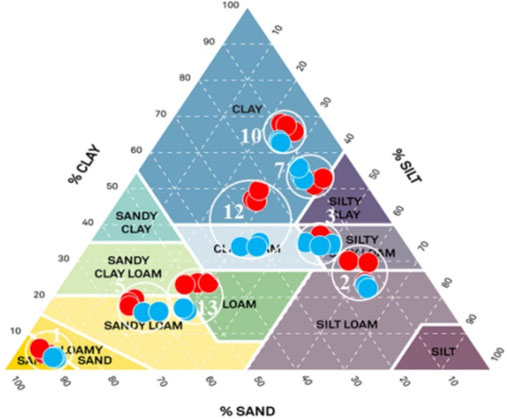Comparative assessment of gravitational sedimentation methods for the evaluation of particle-size distribution in soils
DOI:
https://doi.org/10.31251/pos.v7i2.260Keywords:
soil particle-size distribution; pipette method; Integral Suspension Pressure plus method (ISP+); PARIO measurement device.Abstract
The aim of the study was to carry out a comparative analysis of the results by determining of the particle-size distribution in different soil types by the 1) pipette method and 2) measurement device PARIO, using Integral Suspension Pressure plus method (ISP+).
Location and time of the study. The study was performed in the Core Research Facility "Physico-chemical Methods of Soil and Ecosystem Research" and in the Department of Soil Cryology of the Institute of Physical-Chemical and Biological Problems of Soil Science the Russian Academy of Sciences.
Methods. The determination of the particle-size distribution in soils was carried out by the pipette method and ISP+. Statistical processing of the analytical data was performed by Microsoft Excel and Statistica 12.
Results. The determination of the degree of discrepancy between the results of repeated determinations of the particle-size distribution in soils obtained by the pipette method and ISP+ showed that the coefficients of variation (CV) were different for different fractions. High reproducibility of the results was obtained for the clay fraction. For fractions of the coarse and middle silt, the CV values did not exceed 10-20%. The largest variation in the between repeated measurements using both methods was obtained for the fine silt fraction. The assessment of the average difference and its significance for fine silt and clay fractions by the pipette method and ISP+ showed that there were no significant discrepancies. For the coarse and middle silt, such assessment showed significant differences. Most of the studied soils (14 out of 17) obtained the same classification according to the determinations of the soil particle-size distribution by the compared methods.
Conclusions. The use of the PARIO measurement device for determining soil particle-size distribution allows to exclude disturbance of the suspension during the test run, to track the time and depth of sampling and to reduce measurement time significantly. This study showed the importance of taking into consideration the method of soil granulometry assessment, as results may be quite different, especially for the fractions of coarse and medium silt, thus affecting soil taxonomic attribution.
Downloads

Downloads
Published
How to Cite
Issue
Section
License
Copyright (c) 2024 The Journal of Soils and Environment

This work is licensed under a Creative Commons Attribution 4.0 International License.






